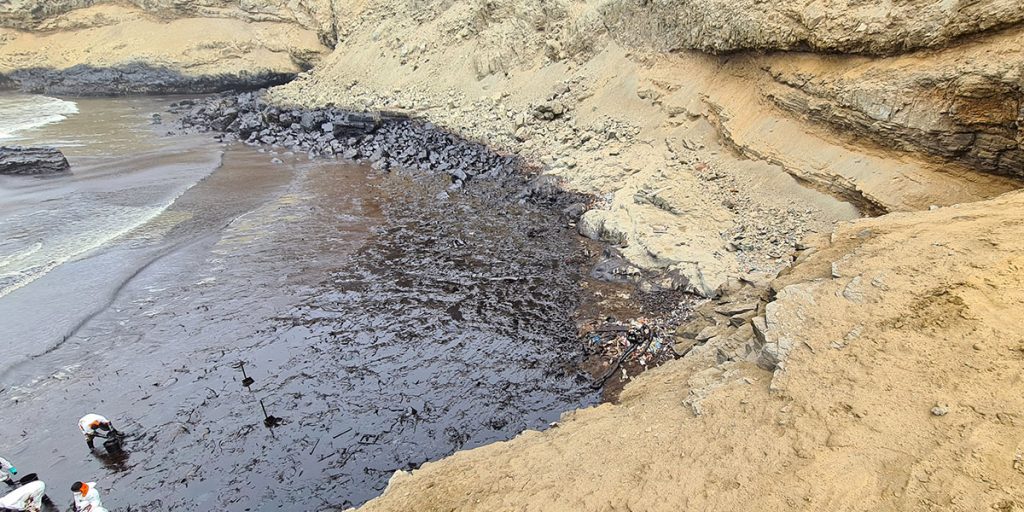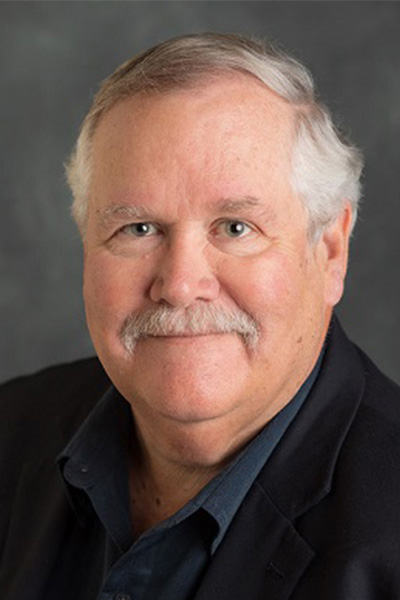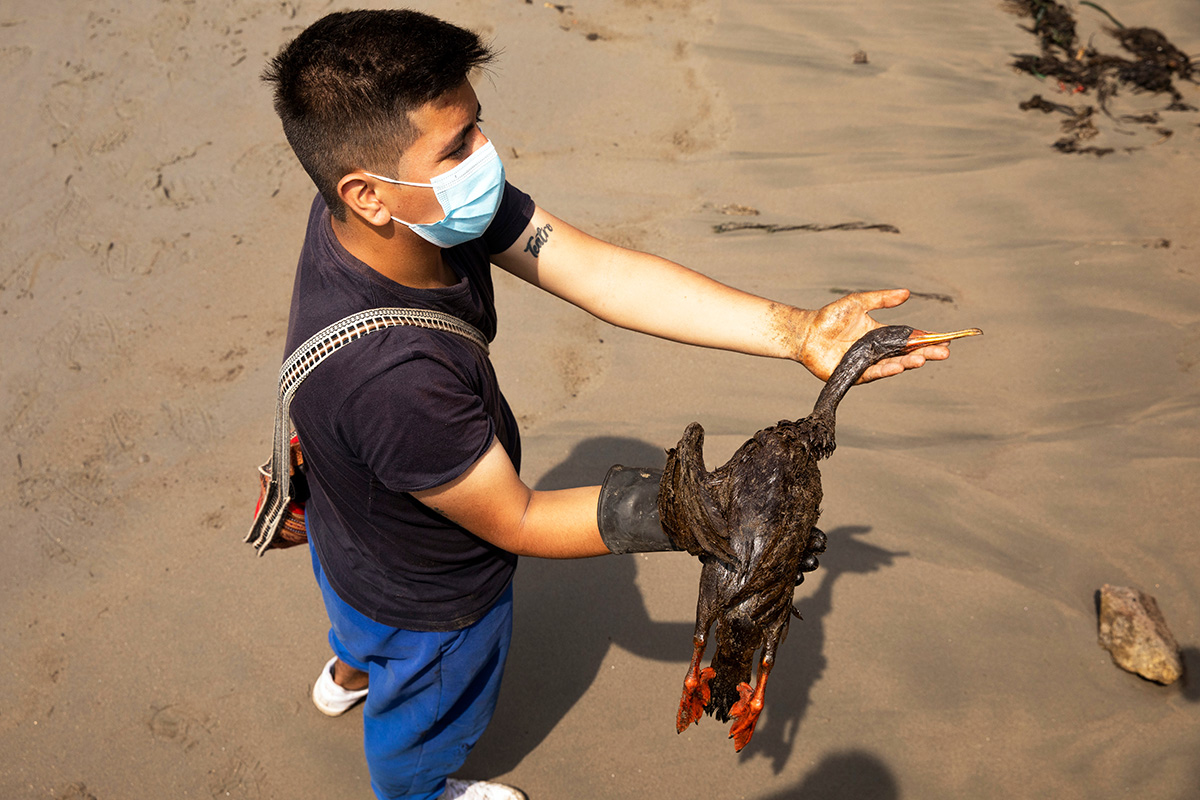Hazen Offers Expertise to Peruvian Officials, Scientists in Wake of Oil Spill
A volcano on one of the islands making up the Kingdom of Tonga in the South Pacific started erupting in December, 2021, culminating with a January 15th explosion so large that images of it from satellites drew attention from around the world.
That blast, the largest since Mount Pinatubo erupted in the Philippines more than 30 years earlier, was ultimately responsible for a handful of deaths and a few dozen missing, many due to the tsunamis resulting from the explosion.
What had gotten considerably less coverage is the environmental impact, especially in Peru, where waves caused an oil spill initially reported as seven gallons, but later readjusted to around 6,000 barrels, far more than original estimates.

Faced with this environmental crisis, Peru ordered 27 beaches closed, prohibited executives of the oil company involved, Repsol, from leaving the country, and began looking for ways to mitigate and clean up the disaster.
That’s where University of Tennessee-Oak Ridge National Laboratory Governor’s Chair for Environmental Biotechnology Terry Hazen enters the picture.

He was contacted by someone from the Peruvian Life Cycle Assessment and Industrial Ecology Network to address an online forum.
Those inquiries came to the right place, as Hazen has served as an expert on some of the biggest oil cleanup efforts in US history, including after the Deepwater Horizon catastrophe in the Gulf Coast, when he even testified before Congress.
“I was asked to offer my thoughts and perspective based on my experience with the Exxon Valdez and Deepwater Horizon spills, and talk about what lessons Peru could use from them,” said Hazen. “We talked about components of an oil spill, what ecological processes affect them, and the different ways droplets behave depending on whether it is a surface spill or deep in the water, especially how they spread.”
Hazen holds appointments in three departments at UT, each highlighting why he is uniquely equipped for environmental cleanup projects: the Department of Civil and Environmental Engineering, the Department of Microbiology, and the Department of Earth and Planetary Sciences.
While he has used his experiences across the board in those areas to help out in the US, this time he addressed an eager audience in Peru via a webinar where he talked about the good, the bad, what works, and what doesn’t, based off his actual work in the field.
While engaging in its own right, it also served to lead Hazen to a different sort of meeting.
“I had a request to meet with Isabel Villalba, from the National Service of Protected Areas, which is part of the Ministry of Environment, and her team,” said Hazen. “It went well, and they were appreciative of my time and efforts.”
Hazen has also since received praise from Carlos Grau, president of Pontifical Catholic University of Peru, for his willingness to share his thoughts and first-hand knowledge of oil spill responses.
“It was interesting to see how you explained complex concepts in terms that are understandable for a general audience,” said Grau. “We also want to thank you for your willingness to answer to all the attendees’ questions as well as the recommendations you provided at the end of the webinar.”
While there is no magic solution once accidents like the one in Peru occurs, thanks to Hazen’s experience, expertise, and willingness to volunteer to help, the outcome could be greatly improved from what it might otherwise have been.
